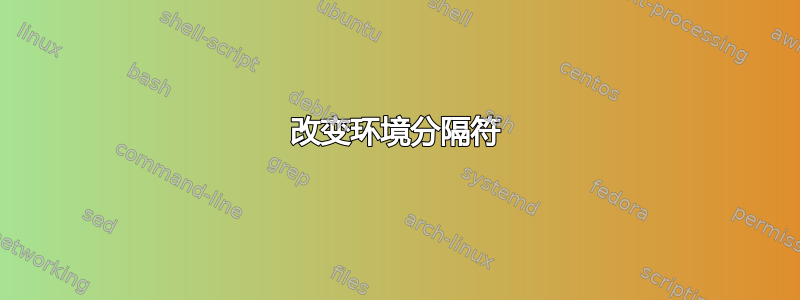
我需要更改数字之间的分隔符罗格朗橙皮书从.到-。
我的意思是,Theorem 2.1.1我希望Theorem 2-1-1
这是我的 MWE:
% !TEX TS-program = xelatex
% !TEX encoding = UTF-8
\documentclass{article}
\usepackage[top=1in, bottom=1in, left=1in, right=1in]{geometry}
\geometry{a4paper}
\usepackage{epigraph}
\usepackage[T1]{fontenc}
\usepackage{amsmath,amsfonts,amssymb,amsthm}
\usepackage{empheq}
\usepackage{cases}
\usepackage{xcolor}
\definecolor{lightgray}{gray}{0.9}
\definecolor{ocre}{RGB}{0,244,244}
\RequirePackage[framemethod=default]{mdframed}
\usepackage{tikz}
\usetikzlibrary{calc,patterns,decorations.pathmorphing,arrows.meta,decorations.markings}
\usepackage[localise=on]{xepersian}
\settextfont[Scale=1.2]{HM XNiloofar}
\setdigitfont[Scale=1]{HM XNiloofar}
%----------------------------------------------------------------------------------------
% THEOREM STYLES
%----------------------------------------------------------------------------------------
\usepackage{amsmath,amsfonts,amssymb,amsthm} % For math equations, theorems, symbols, etc
\newcommand{\intoo}[2]{\mathopen{]}#1\,;#2\mathclose{[}}
\newcommand{\ud}{\mathop{\mathrm{{}d}}\mathopen{}}
\newcommand{\intff}[2]{\mathopen{[}#1\,;#2\mathclose{]}}
\newtheorem{notation}{Notation}[section]
% Boxed/framed environments
\newtheoremstyle{ocrenumbox}% % Theorem style name
{0pt}% Space above
{0pt}% Space below
{\normalfont \baselineskip 20pt}% % Body font
{}% Indent amount
{\small\bf \color{ocre}}% % Theorem head font
{\;}% Punctuation after theorem head
{0.25em}% Space after theorem head
{\small \color{ocre}\thmname{#1}\nobreakspace\thmnumber{#2:}% Theorem text (e.g. Theorem 2.1)
\thmnote{\nobreakspace\the\thm@notefont \bfseries\color{black}---\nobreakspace#3.}} % Optional theorem note
\renewcommand{\qedsymbol}{$\blacksquare$}% Optional qed square
\newtheoremstyle{blacknumex}% Theorem style name
{5pt}% Space above
{5pt}% Space below
{\normalfont \baselineskip 20pt}% Body font
{} % Indent amount
{\small\bf }% Theorem head font
{\;}% Punctuation after theorem head
{0.25em}% Space after theorem head
{\small {\tiny\ensuremath{\blacksquare}}\nobreakspace\thmname{#1}\nobreakspace\thmnumber{#2:}% Theorem text (e.g. Theorem 2.1)
\thmnote{\nobreakspace\the\thm@notefont \bfseries---\nobreakspace#3.}}% Optional theorem note
\newtheoremstyle{blacknumbox} % Theorem style name
{0pt}% Space above
{0pt}% Space below
{\normalfont \baselineskip 20pt}% Body font
{}% Indent amount
{\small\bf }% Theorem head font
{\;}% Punctuation after theorem head
{0.25em}% Space after theorem head
{\small\color{ocre}\thmname{#1}\nobreakspace\thmnumber{#2:} % Theorem text (e.g. Theorem 2.1)
\thmnote{\nobreakspace\the\thm@notefont\bfseries\color{black}---\nobreakspace#3.}} % Optional theorem note
% Non-boxed/non-framed environments
\newtheoremstyle{ocrenum}% % Theorem style name
{5pt}% Space above
{5pt}% Space below\ss
{\normalfont \baselineskip 20pt}% % Body font
{}% Indent amount
{\small\bf \color{ocre}}% % Theorem head font
{\;}% Punctuation after theorem head
{0.25em}% Space after theorem head
{\small \color{ocre}\thmname{#1}\nobreakspace\thmnumber{#2:}% Theorem text (e.g. Theorem 2.1)
\thmnote{\nobreakspace\the\thm@notefont \bfseries\color{black}---\nobreakspace#3.}} % Optional theorem note
\renewcommand{\qedsymbol}{$\blacksquare$}% Optional qed square
\makeatother
% Defines the theorem text style for each type of theorem to one of the three styles above
\newcounter{dummy}
\numberwithin{dummy}{section}
\theoremstyle{ocrenumbox}
\newtheorem{theoremeT}{مثال}[section]
\newtheorem{problem}{مسئله}[section]
\newtheorem{exerciseT}{تمرین}[section]
\theoremstyle{blacknumex}
\newtheorem{exampleT}{مثال}[section]
\theoremstyle{blacknumbox}
\newtheorem{vocabulary}{Vocabulary}[section]
\newtheorem{definitionT}{تعریف}[section]
\newtheorem{corollaryT}[dummy]{فرض}
\theoremstyle{ocrenum}
\newtheorem{proposition}{گزاره}[section]
%----------------------------------------------------------------------------------------
% DEFINITION OF COLORED BOXES
%----------------------------------------------------------------------------------------
% Theorem box
\newmdenv[skipabove=7pt,
skipbelow=7pt,
backgroundcolor=black!5,
linecolor=ocre,
rightline=false,
leftline=true,
innerleftmargin=5pt,
innerrightmargin=5pt,
innertopmargin=5pt,
leftmargin=0cm,
rightmargin=0cm,
innerbottommargin=5pt]{tBox}
% Exercise box
\newmdenv[skipabove=7pt,
skipbelow=7pt,
rightline=true,
leftline=false,
topline=false,
bottomline=false,
backgroundcolor=ocre!10,
linecolor=ocre,
innerleftmargin=5pt,
innerrightmargin=5pt,
innertopmargin=5pt,
innerbottommargin=5pt,
leftmargin=0cm,
rightmargin=0cm,
linewidth=4pt]{eBox}
% Definition box
\newmdenv[skipabove=7pt,
skipbelow=7pt,
rightline=true,
leftline=false,
topline=false,
bottomline=false,
linecolor=ocre,
innerleftmargin=5pt,
innerrightmargin=5pt,
innertopmargin=0pt,
leftmargin=0cm,
rightmargin=0cm,
linewidth=4pt,
innerbottommargin=0pt]{dBox}
% Corollary box
\newmdenv[skipabove=7pt,
skipbelow=7pt,
rightline=true,
leftline=false,
topline=false,
bottomline=false,
linecolor=gray,
backgroundcolor=black!5,
innerleftmargin=5pt,
innerrightmargin=5pt,
innertopmargin=5pt,
leftmargin=0cm,
rightmargin=0cm,
linewidth=4pt,
innerbottommargin=5pt]{cBox}
% Creates an environment for each type of theorem and assigns it a theorem text style from the "Theorem Styles" section above and a colored box from above
\newenvironment{theorem}{\begin{tBox}\begin{theoremeT}}{\end{theoremeT}\end{tBox}}
\newenvironment{exercise}{\begin{eBox}\begin{exerciseT}}{\hfill{\color{ocre}\tiny\ensuremath{\blacksquare}}\end{exerciseT}\end{eBox}}
\newenvironment{definition}{\begin{dBox}\begin{definitionT}}{\end{definitionT}\end{dBox}}
\newenvironment{example}{\begin{exampleT}}{\hfill{\tiny\ensuremath{\blacksquare}}\end{exampleT}}
\newenvironment{corollary}{\begin{cBox}\begin{corollaryT}}{\end{corollaryT}\end{cBox}}
%----------------------------------------------------------------------------------------
% REMARK ENVIRONMENT
%----------------------------------------------------------------------------------------
\newenvironment{remark}{\par\vspace{10pt}\small % Vertical white space above the remark and smaller font size
\begin{list}{}{
\leftmargin=35pt % Indentation on the left
\rightmargin=5pt}\item\ignorespaces % Indentation on the right
\makebox[-2.5pt]{\begin{tikzpicture}[overlay]
\node[draw=ocre!60,line width=1pt,circle,fill=ocre!5,font= \bfseries,inner sep=2pt,outer sep=0pt] at (20pt,0pt){\textcolor{ocre}{توجه}};\end{tikzpicture}} % Orange R in a circle
\advance\baselineskip 5pt}{\end{list}\vskip5pt} % Tighter line spacing and white space after remark
\begin{document}
\section{قسمت}
\subsection{زیرقسمت}
\begin{theorem}
مدل ساده شدهی مانور یک خودرو را در نظر بگیرید. اگر سرعت چرخش و گردش، هنگامی که سیستم غیرخطی بدست میآید؛ قابل کنترل باشد:
\begin{equation}
\frac{d}{dx}\begin{bmatrix}x_1\\x_2\\x_3\end{bmatrix}=\begin{bmatrix}\sin(x_3)\\\cos(x_3)\\0\end{bmatrix}u_1+\begin{bmatrix}0\\0\\0\end{bmatrix}u_2
\end{equation}
به وضوح مشخص است که خطی سازی آن حول هر نقطهی x کنترلپذیر نیست. اگرچه خواهیم دید که این مدل کنترلپذیر است.( طبق تجربهی همهی ما از رانندگی با یک ماشین!)
\end{theorem}
\begin{corollary}
الف) فضای ورودی $U$ بهگونهای است که مجموعهی مرتبط با میدان برداری سیستم معادله \رجوع{EqNON}:
\begin{equation}
F=|f+\sum_{j=0}^{m} g_ju_j| ,\quad u=(u_1,...,u_m) \in U ,
\label{EqDef}
\end{equation}
میدانهای برداری $f,g_1,...,g_m$ را شامل میشود.\\
ب) $U$ شامل توابع تکهای ثابت است که از سمت راست پیوسته تکهای میباشد.
\end{corollary}
\end{document}
我怎样才能做到这一点??



